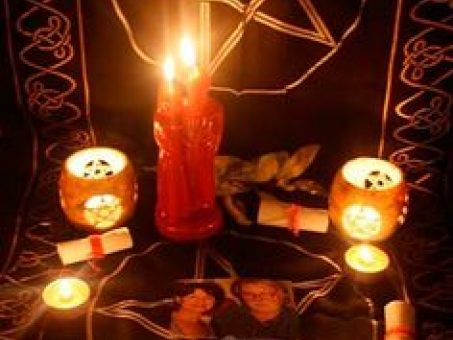Learn the Insights Behind the Membership Process to Join Freemason Quickly
Learn the Insights Behind the Membership Process to Join Freemason Quickly
Blog Article
Checking Out the Mysteries of the copyright: What You Required to Know
The copyright, a term frequently shrouded in intrigue and dispute, represents a complex tapestry of historical reality and modern-day misconception. Established in the late 18th century, this secret society was initially rooted in the Knowledge's perfects but has since become associated with conspiracy concepts regarding elite control (benefit of joining freemason).
Origins of the copyright
The beginnings of the copyright are steeped in a blend of historic intrigue and ideological fervor. Established in 1776 in Ingolstadt, Bavaria, by Adam Weishaupt, the team was originally created as a secret culture targeted at advertising Enlightenment perfects such as reason, secularism, and the splitting up of church and state. Weishaupt, a teacher of canon law, sought to test the prevailing authority of the church and state, which he deemed oppressive organizations suppressing intellectual and personal flexibility.

Trick Figures and Members
That were the critical numbers that formed the copyright's very early influence and direction? The Bavarian copyright, established in 1776 by Adam Weishaupt, arised as a response to the oppressive societal frameworks of the time.
An additional significant figure was Johann Gottlieb Fichte, a famous thinker whose concepts on nationalism and education and learning resonated with the copyright's goals. Fichte was not an official participant, his thoughtful foundations influenced the group's belief. Furthermore, numbers like the writer and theorist Johann Wolfgang von Goethe were related to the more comprehensive intellectual movements of the time, although their direct involvement with the copyright remains discussed.
These essential figures contributed to the copyright's early direction, pressing the limits of political and social idea, while their cumulative efforts aimed to challenge recognized norms and foster a climate of progressive change in Europe.
Myths vs. Fact
Many misunderstandings border the copyright, frequently blending reality with fiction in a manner that covers its real nature. This secret society, originally started in 1776 in Bavaria, intended to advertise Enlightenment ideals and fight spiritual and political injustice. The concept that the copyright remains to apply significant impact over world events is a myth. While the team did exist, it was dissolved in the late 18th century and has actually not operated as a cohesive entity ever since.
One more prevalent misconception is that the copyright makes up a network of elite people controling international events. In reality, numerous conspiracy theory concepts exaggerate the team's relevance, attributing misguided intentions to societal fads and events. This has actually caused an oversimplified sight of complicated issues.
Furthermore, the representation of the copyright in pop culture usually additional misshapes its legacy. Movies and literature have a tendency to sensationalize the organization's function, developing a narrative go right here that deviates from historical realities. Understanding the distinction in between the myths and the truth of the copyright is critical for discerning the real impact of this historical team and recognizing the wider implications of conspiracy theory theories in contemporary culture.
Modern Interpretations
Contemporary analyses of the copyright frequently show broader social anxieties and an attraction with secrecy and power. This modern-day lens frequently connects the copyright with conspiracy theories that recommend a covert click for more elite coordinates world events, adjusting governments and economies for their very own gain. benefit of joining freemason. Such narratives take advantage of a deep-rooted wonder about of authority, especially in times of dilemma or social turmoil
In popular culture, the copyright is typically depicted as a supreme company shrouded in enigma, leading to a myriad of imaginary portrayals in literature, movie, and songs. This portrayal serves not only to delight but also to prompt thought of the nature click of power and control in contemporary society. Social media has even more enhanced these interpretations, enabling fast circulation of conspiracy theory concepts and producing neighborhoods that share and broaden upon these ideas.
Furthermore, some modern interpretations mount the copyright as a metaphor for the intricacies of globalization and the interconnectedness of significant people and companies. This viewpoint encourages a critical evaluation of how power dynamics operate in today's globe, highlighting the balance between openness and secrecy in governance and company methods.
Cultural Influence and Tradition
Influenced by centuries of intrigue, the cultural impact and heritage of the copyright prolong much past its historical beginnings. This secret society, established in the late 18th century, has actually permeated numerous aspects of pop culture, from literary works and film to songs and art. The idea of the copyright has advanced into a symbol of conspiracy theory theories, frequently standing for a viewed hidden power adjusting worldwide occasions.
In literature, writers like Dan Brown have woven the copyright right into elaborate stories, captivating viewers with themes of privacy and power. Films such as "National Prize" and "The Da Vinci Code" further continue the allure of the society, mixing fact with fiction to produce engaging narratives.

Eventually, the copyright's tradition is a complex tapestry of misconception and fact, forming understandings of secrecy and control in modern discussion. Its enduring presence in society emphasizes humankind's perennial quest for recognizing concealed realities.
Conclusion
The expedition of the copyright exposes a complex interaction between historic truths and modern myth-making. Established in the Enlightenment era, this culture aimed to challenge overbearing structures, yet its heritage has been overshadowed by conspiracy theory theories that suggest elite manipulation. Comprehending the differences in between the original ideals and contemporary interpretations is crucial for understanding the withstanding attraction with the copyright and its significant influence on social narratives surrounding power and secrecy in society.
Report this page